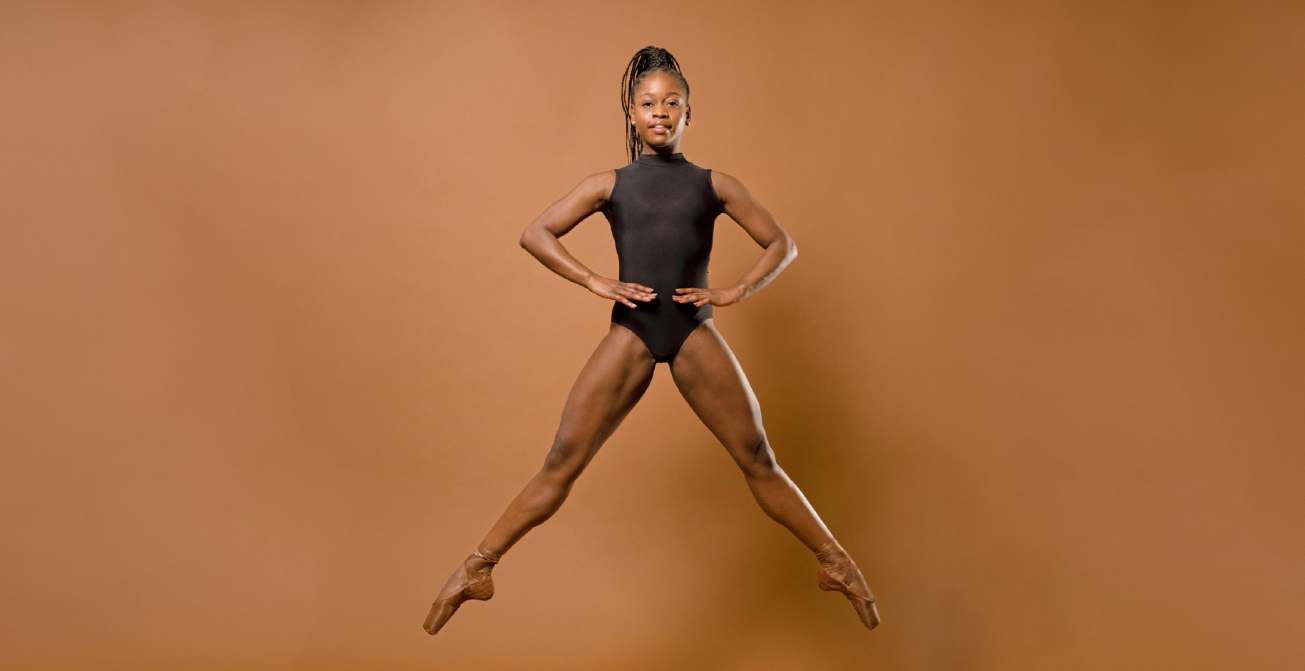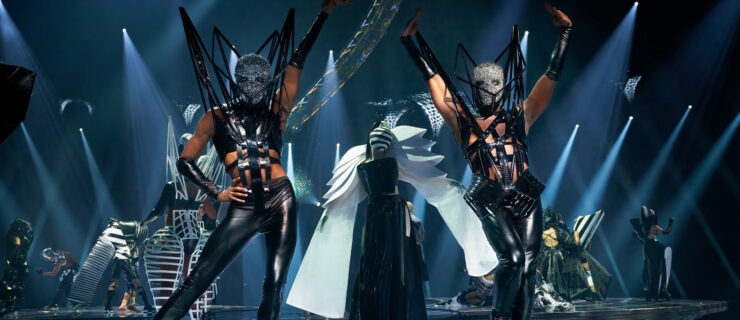Dance Artists Pay Tribute to Michaela Mabinty DePrince, 1995–2024
When news broke earlier this month that ballerina Michaela Mabinty DePrince had passed away at age 29, the dance world reacted with shock, confusion, and profound sadness. She was so young; she had already accomplished so much in her extraordinary life, and yet her singular talent was still deepening, expanding, revealing itself.
DePrince’s against-all-odds journey from an orphanage in Sierra Leone to some of the world’s greatest ballet stages has been well-documented—in the film First Position, in her own autobiography, in the pages of Pointe, Dance Magazine, and Dance Spirit. For much of her life, she was one of the most famous ballerinas in the world. She was an inspiration even to people who knew little about dance. But dancers often stood in awe of her, too.
Since DePrince’s death, some of the artists who worked alongside her—firsthand witnesses to her gifts and influence—have begun to put their love and grief into words. Seven of them share their thoughts and experiences here.
Mariaelena Ruiz
Director of Cary Ballet Conservatory
I remember when Michaela first came to The Rock School, where I was ballet master. She was about 12. She was small for her age, and could light up a room with her eyes and with her smile. You could see her determination—she’d take first position at the barre, and you knew she was there to prove herself. I always thought the spots from her vitiligo made her look beautiful—they were her “sparkle.” When she would feel self-conscious, I would tell her that, and she’d smile and say, “You’re right. I do sparkle.”
Because Michaela had been a swimmer, she had a lot of athleticism and power. Everyone who choreographed on her emphasized her strength—lots of jumps, punching things. But the last time I coached her for Youth America Grand Prix, she wanted to be more lyrical and soft. She did Queen of the Dryads, and a very fluid piece that we created together with only one jump. Even then, she didn’t want to be stereotyped. And she performed so beautifully—it was a big step for her.
During COVID, we had a program called Creating Hope With Action at Cary Ballet, where we’d have professionals talk to the students over Zoom. Michaela was one of them. The kids were so excited, and she was so kind to them. After training her as a dancer, then seeing her so poised and composed, with all of this experience, I felt so proud. I still cannot comprehend that she’s gone.
Larissa Saveliev
Founder and Artistic Director of Youth America Grand Prix
We first discovered Michaela when she was 10 years old at one of our competitions. She was from a very small school in Vermont, and when she came onstage, she was like a tornado—you couldn’t take your eyes off her. She wasn’t polished, but you could see this firework inside of her. It was obvious to me that she would have a future in dance, and I was very curious to see which path she’d choose that would match her level of talent.
At the time I didn’t know anything about her past, just that she was a beautiful dancer. We found out when we were filming First Position, and the director started the casting process by talking to a lot of kids. That’s when she shared about her childhood in Sierra Leone—her story was so compelling, and she received all of this mainstream attention afterwards.
I think it says a lot that so many ballet institutions and dancers from all over the world paid tribute to her after her passing. Her life was short, but it was very, very bright. She definitely left her legacy behind.
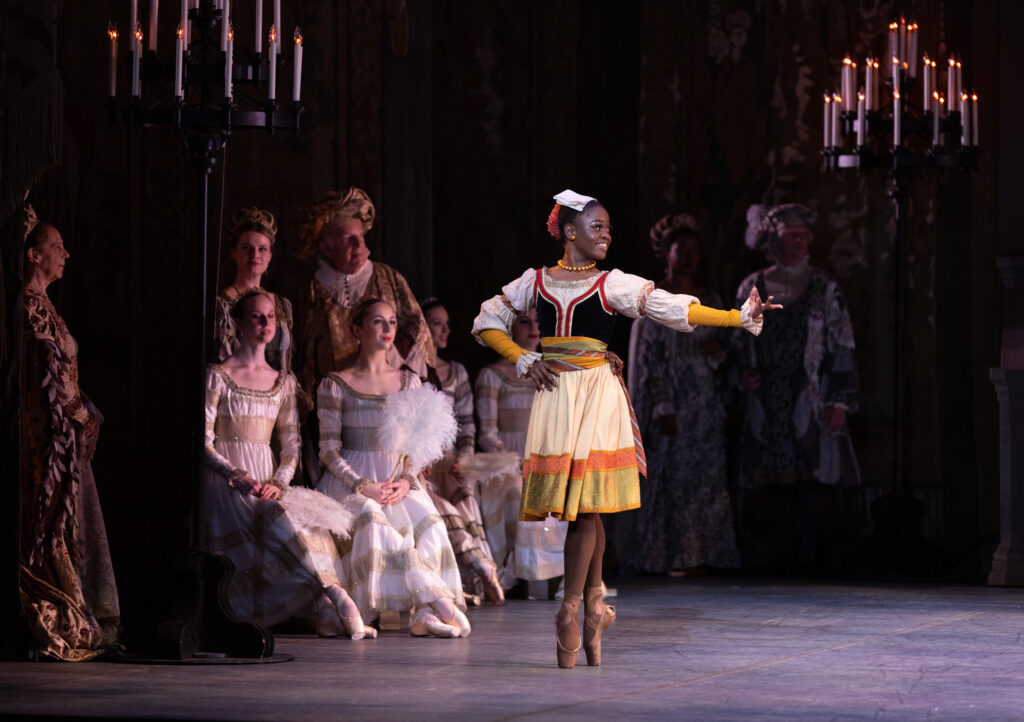
Theresa Ruth Howard
Founder and Curator of Memoirs of Blacks in Ballet
Say her name…
Her name was Mabinty. The last time I interviewed “Michaela” was on October 4, 2021. We spoke for four hours. It was during that conversation that she confided in me that, in her personal life at work and with friends, she had reclaimed her birth appellation, Mabinty. At this time she requested that it remain private. I felt honored that she shared that with me and invited me to call her by her name.
We first met in 2017 at Dutch National Ballet’s Positioning Ballet Conference. After my keynote speech, she agreed to sit with me for 20 minutes—which turned into two hours. I was not in her inner circle, although I had at times acted as an advocate, as is often the case with Black dancers I sit with. When we spoke, there was an outpouring, as if discovering a safe space to lay heavy burdens carried alone for too long. With Mabinty, it was as if we had been walking the same road and had briefly sat for a while to rest before going our separate ways on the same path. She did not tarry for long, just enough to lighten her load and rest her feet.
Personally, her dancing was the least impressive thing about her. She had old eyes and a sage soul. There was a depth, insight, and knowing about her that enabled her, at 19, to deliver a powerful TEDx talk about her origin story as a child of war. She’d go on to advocate for children of war all over the world. Her courage, maturity, and resilience might have been byproducts of her early life challenges, but they made her uniquely suited to endure the world of ballet as a dark-skinned female. Unfortunately, what was a fairy-tale dream of escape should not have felt like another battleground. There is so much that Mabinty taught us, there is still so much to be learned. While we mourn what we have lost, let us be grateful for what was.
Charla Genn
Dance Coach and Rehabilitation Specialist
I began working with Michaela when she was 17. Dirk Badenhorst, the director of South African Ballet Theatre, had invited her to dance as a principal guest artist in the company’s productions of Le Corsaire and Don Quixote, and asked me to coach her beforehand. What struck me was her natural talent, her willingness to learn, and how quickly she applied what I had to say. Refining technique was easy for her, so we mainly focused on artistry. We worked on storytelling, how to develop a role, and how to make her port de bras more expressive. She became fully invested in her artistry. Over the years, it thrilled me to see how she moved audiences with her expressiveness and passion.
Michaela was so warm and open, and we had a deep and trusting working relationship. Long before Zoom, we’d work together via Skype from wherever she was in the world. If she wanted to fix something, it didn’t matter the time difference, she’d find a studio so we could work virtually together, or she’d practice on her own and send me the video for comments. One huge challenge was when she snapped her Achilles tendon; when she was cleared to start dancing, we worked together virtually five days a week. She had such incredible determination to retrain and rehabilitate. She knew that she had to change certain technical habits, and she took in my feedback so intelligently and applied it so quickly. I will never forget her elation when she was finally able to get back onto pointe and jump again. Her joy and dedication to dance never wavered—she was and still is an inspiration for us all.
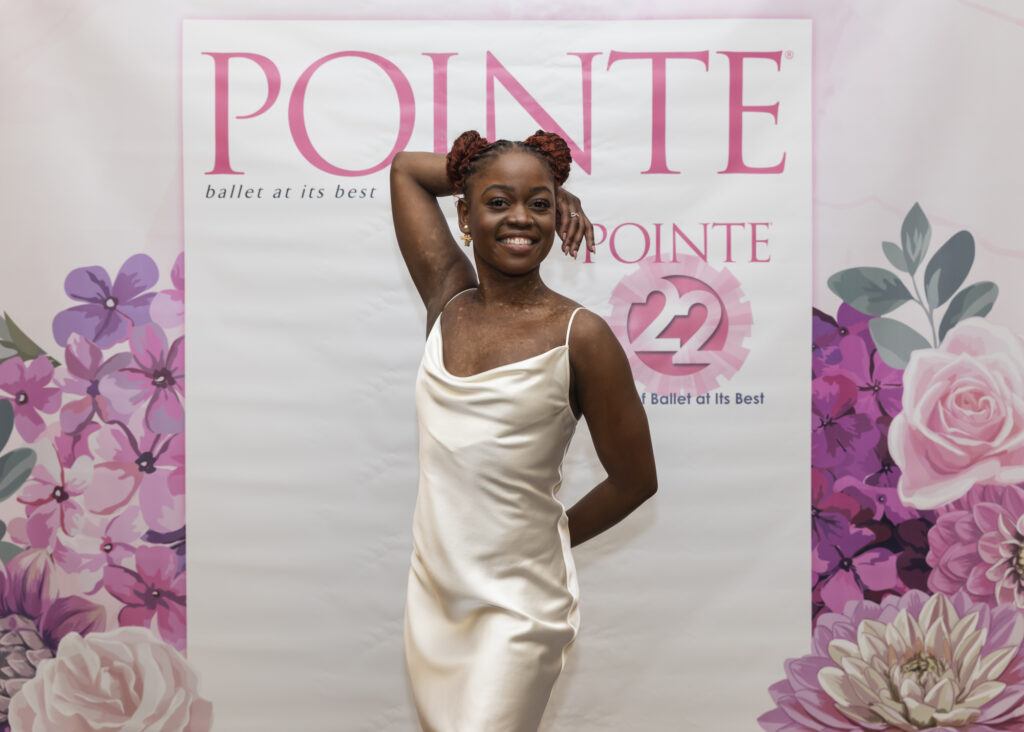
Ingrid Silva
Dancer With Dance Theatre of Harlem
Mabinty and I bonded naturally. She had a very bright spirit, always smiling and making jokes. I had the privilege of doing Glinka Pas de Trois with her at Dance Theatre of Harlem when Virginia Johnson brought the company back in 2013. It was our first Balanchine ballet, and what a hard one! The first time we performed it onstage, we were so nervous. I remember we were holding hands backstage, saying, “We have each other. It doesn’t matter what happens. We’ll look at each other, and we’ll make it work.” I think that experience really made our friendship grow.
The impact that she could share with the world, just by being herself, has always been huge. I think we were all inspired by watching her journey and her growth. At Dance Theatre of Harlem, we always say that we represent something larger than ourselves. She really was that something larger than herself.
We went to each other’s homes, celebrated each other’s birthdays. She was a great Auntie to my daughter, Laura—she’d babysit whenever she was back in New York from Boston. She met my mom and dad. She is family, and this is taking a toll on me.
Ted Brandsen
Artistic Director of Dutch National Ballet
I’ve known Michaela since 2012, when she first came to audition for our junior company. She was quite little, but she had enormous energy, an amazing jump, a radiant smile, and she turned like a top! I thought, Wow, who is this dancer? I didn’t know anything about her life story, not at first. But not long after that, she and her mother published their book, which opened the floodgates for an enormous amount of publicity requests. It was so overwhelming that Michaela, our press department, and myself said, “Okay, we need to filter this.” We needed to protect her.
She was an extraordinarily determined dancer and young woman, always pushing herself and very conscientious in the studio. She rose through the ranks and danced really well in a number of great productions, big roles. The company dancers understood and accepted the fact that there was so much interest in her story, because she was such a good friend to so many of them. They also saw that she was serious about her work.
Michaela was very focused on sharing her story of hope and determination with the world. When she started working for War Child, she organized a benefit gala here in Amsterdam for hundreds of people. She raised half a million euros in one evening, which is incredible for a 24- or 25-year-old to be able to do. People saw the ability she had to inspire others. For someone so young, she was so determined and so mature in her approach in how to use her fame to benefit others.
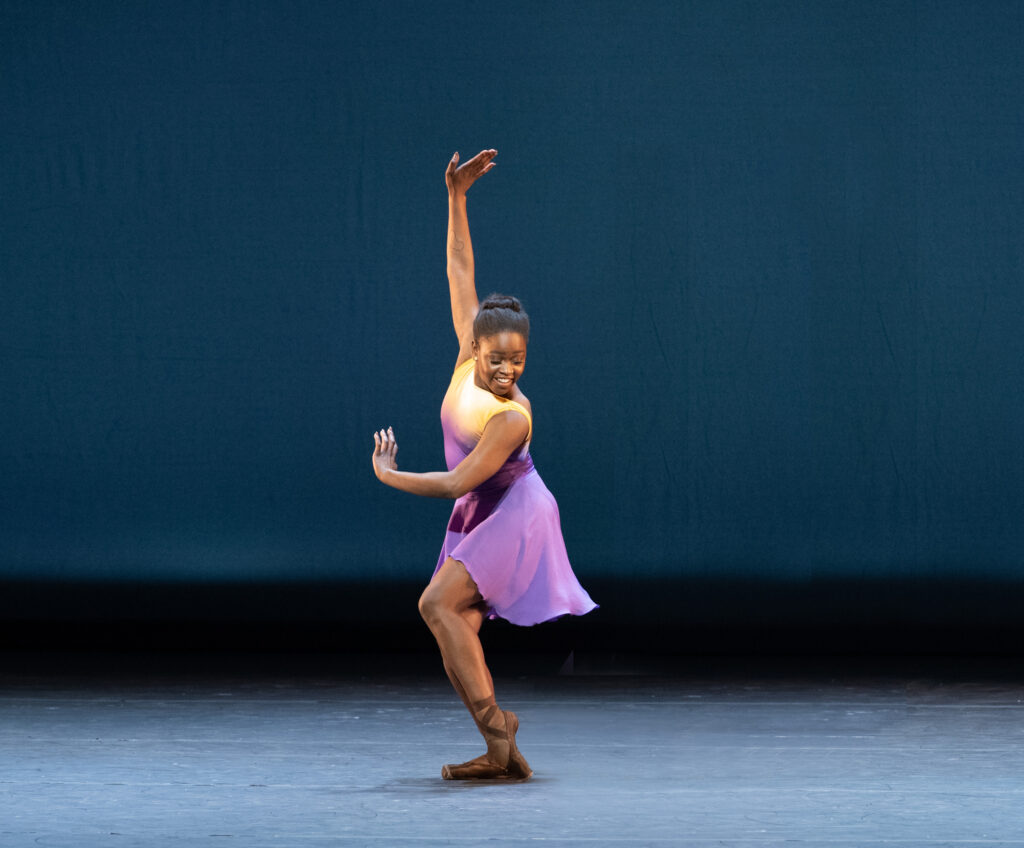
My’Kal Stromile
Dancer With Boston Ballet
Mabinty. A beautiful light in my life, she reminded me to courageously embrace myself and those around me. A champion for change and inclusivity, her presence alone, in various spaces, was a paradigm shift. To me, she held up a mirror to everyone she encountered, causing them to look inward, see themselves and love that reflection coming back at them or at other times, consider better alternatives to the way we communicate with and love one another.
The very first time I saw her dance live in 2021 in the Boston Ballet studios, I said to myself, “She is a force and there is something beautifully different about her.” Perhaps her resiliency, coupled with years of honing her craft, felt tangible to me in that moment. The surrounding air, filled with her essence, like a candle’s bright light and warmth, was both enriching and evocative.
As our quiet friendship developed, I felt fortunate to learn about her sense of humor. As focused and driven as she was, she found time to laugh. Rehearsals are complex, and when unexpected surprises occurred, Mabinty and I would always find each other from across the room, give each other a knowing look or shared glance, and burst into laughter! Without words, we knew what the other was thinking.
Besides dancing with her and spending time as friends, she invited me to choreograph solos for her. She believed in my abilities as a young choreographer and would tell me that my work needed to be seen, particularly as a Black male choreographer in the ballet world. Mabinty took it upon herself to make room for me in spaces that she was already a star in, introduced me to key figures, and allowed me to find confidence in my artistic voice. I will always appreciate her care and attention to making sure voices of color are amplified. It is my desire to continue walking the path she cultivated by inspiring others, championing change, and ultimately being undeniable.
